 “It’s the Pontiac Aztek of knives.”
“It’s the Pontiac Aztek of knives.”
Those words, spoken by a friend who gifted me his old Boker Reality Based Blade, could not sum up the issues surrounding this knife more succinctly. If you remember the Pontiac Aztek (which was a running sight gag on the AMC drama Breaking Bad), you know that it was an SUV crossover vehicle intended to be all things to all people. It had many desirable features, most likely focus-group tested and thoroughly considered. It was the kind of car that hopes to address literally everything that its prospective buyers might imagine. It had lengthy product descriptions, it boasted then state-of-the-art engineering, and it was proudly unveiled to the public amidst great fanfare.
And it was hopelessly ugly.
The Aztek is a great example of a vehicle that should have, on paper, been wildly popular. It was a testament to function over form. Unfortunately, the aesthetics suffered accordingly. The whole was greater than the sum of the parts… but not in the eyes of the buying public.
In some ways, the Boker Reality Based Blade (RBB) has suffered from the same Rodney Dangerfield-like lack of respect. It is not on the top of anybody’s tactical knife list, though it’s been in production for more than a decade. Whipping one out at a seminar won’t earn you any accolades and just might get you some side-eye or snickers from your fellow students. Yet the RBB is a decent tactical knife despite the lack of respect it gets. The reason for this is simple: It offers many great features in one package. It’s just too bad that the result is, like the Aztek, a hopelessly ugly folding knife.
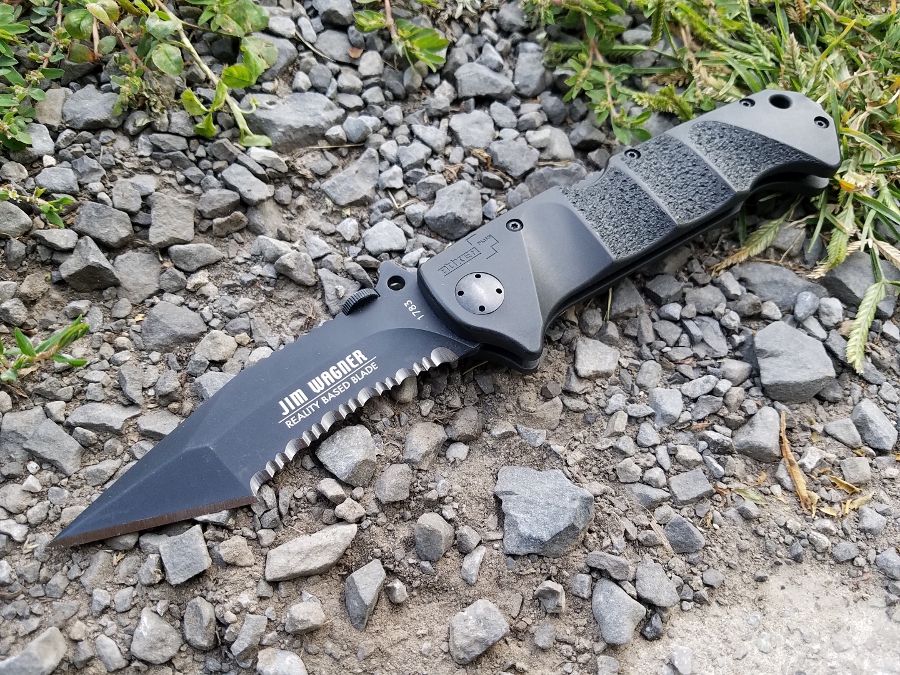
The Boker Reality Based Blade was designed by Jim Wagner. He is — natch — a Reality Based Self Defense, or RBSD, instructor, and probably helped popularize the term RBSD. The earliest Google references for the term — in the early 2000s — seem to originate with Marc “Animal” MacYoung, Sammy Franco, and Rich Dimitri, all recognized names in RBSD instruction. Tony Blauer also offered a “Reality Based Urban Combatives” course that Google references from 2002. It’s possible that programs like Jerry Peterson’s SCARS helped coin or promulgate the term and concept. Regardless of where it came from, though, Wagner and RBSD are inextricably linked.
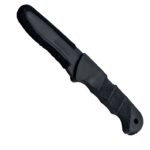 Conceived in 2005 and widely available by the following year, the Reality Based Blade’s history is detailed on Wagner’s website. The RBB product line includes “tanto” (the term most closely corresponding to the radically triangular blade shape) and drop-point blades, well-made training “drones” with red handles, and even a marking-blade (The Boker Plus Training Knife) for full-speed sparring. The availability of integrated training tools for use in learning the necessary skills to deploy these knives in self-defense reflects an admirable commitment to practical self-defense realities. It’s one of the things the RBB has going for it. Anyone devoted to the concept of using a blade in self-defense must train to do so. Having a training knife that matches your live blade in size, feel, and function — and having peripheral training tools, like the marking blade, that further match the feel of your “live” knife — just makes good sense.
Conceived in 2005 and widely available by the following year, the Reality Based Blade’s history is detailed on Wagner’s website. The RBB product line includes “tanto” (the term most closely corresponding to the radically triangular blade shape) and drop-point blades, well-made training “drones” with red handles, and even a marking-blade (The Boker Plus Training Knife) for full-speed sparring. The availability of integrated training tools for use in learning the necessary skills to deploy these knives in self-defense reflects an admirable commitment to practical self-defense realities. It’s one of the things the RBB has going for it. Anyone devoted to the concept of using a blade in self-defense must train to do so. Having a training knife that matches your live blade in size, feel, and function — and having peripheral training tools, like the marking blade, that further match the feel of your “live” knife — just makes good sense.
Wagner is not without his detractors (like so many in the self-defense industry) and has a dedicated following. He’s been featured prominently in Black Belt magazine and is prolific in other martial arts circles online. Among his most vocal critics is martial artist and instructor W. Hock Hochheim, also a prominent figure in the industry. Hochheim has posted a series of critiques on his web forum that seem focused primarily on Wagner’s credentials.
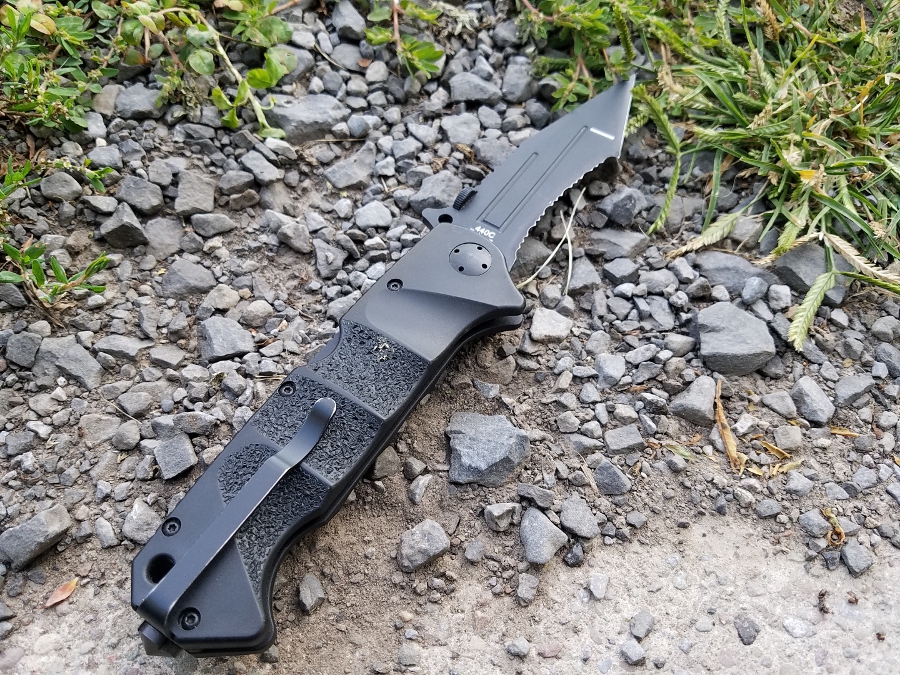
Coincidentally, Germany-based knife manufacturer Boker recently announced the cancellation of its Reality Based Blade seminars, saying in a March press release (which sounds as if it has been translated from German),
Boker has made an internal business decision not to continue with the RBB seminars.
The reasons are based on an internal reorganization and have nothing to do with you as our partner.
It is important for us to state, that there are no issues or irritations on our side. In the successful history of our business cooperation (since 2005) we have been always enjoying a trustful and reliable teamwork with you.
We are happy to hear, that you will continue to offer your seminar program in Germany with other partners. Accordingly interested students and instructors will be able to book your classes in the future in Germany as well.
Of course, we will continue to manufacture and sell the Boker Plus RBB product line and we are happy to continue to work with you on the product management base and to develop new items with you.
Where all this leaves Wagner and his ongoing instructional efforts is unclear. Likely he’ll just keep on as he’s been through the years, teaching reality-based self-defense around the world. The knife remains in production but does not seem to rank highly on any knife users’ or collectors’ lists of favorites. Despite its diminished visibility, though, I have always liked the Reality Based Blade. I think it has great features that make it a desirable self-defense tool (if not something that will draw oohs and ahs from observers to its use). I would take the RBB and its training drone to a knife seminar without hesitation. That’s because it offers the following:
A solid rocker-bar lock. The RBB uses the tried-and-true rocker-bar locking system. Done right, these are nice and strong. My RBB has no vertical blade play (and only the tiniest amount of lateral play). It opens smoothly, locks positively, and passes the “spine whack” test. These are important in a folding “fighting” knife.
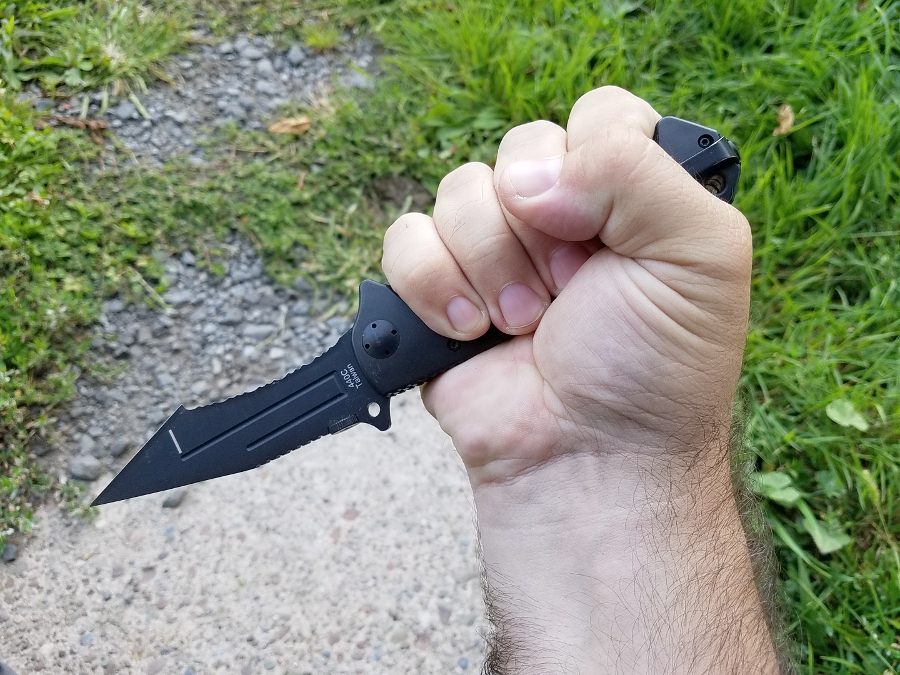
An ambidextrous thumb opener. The knife has a generous thumb disc that can be used by right- and left-hand users with equal ease. The “thumb slide” in the handle guides your thumb to the disc, too.
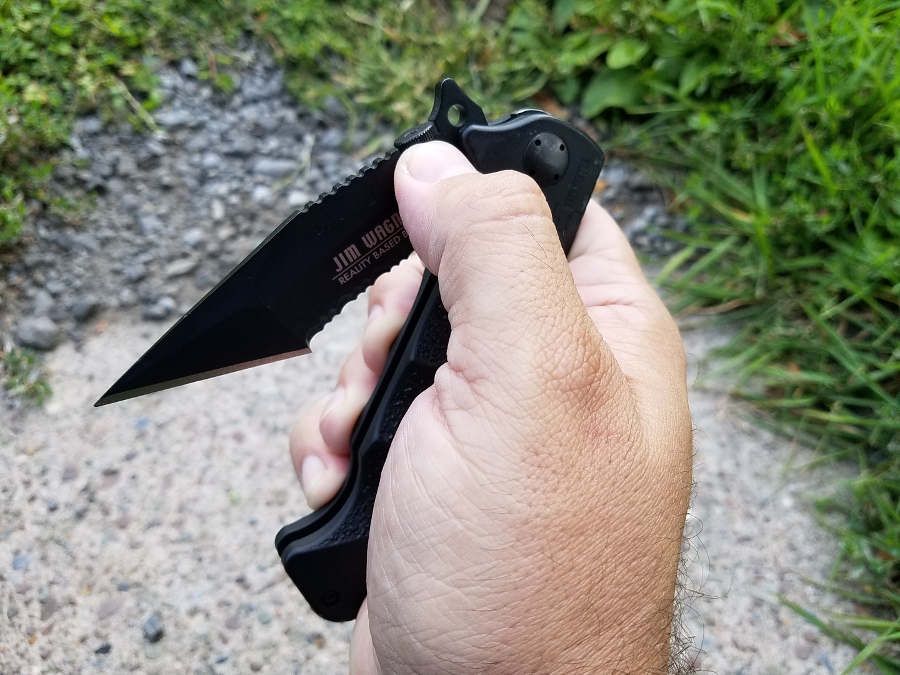
A low-profile pocket clip. While I wish the pocket clip were wider, it allows the knife to sit very low in the pocket. From the factory it also offers a “pen cap” style tip that is less obvious than the standard “glass breaker.” I doubt anyone has ever really been fooled by this except at first casual glance, but it couldn’t hurt.
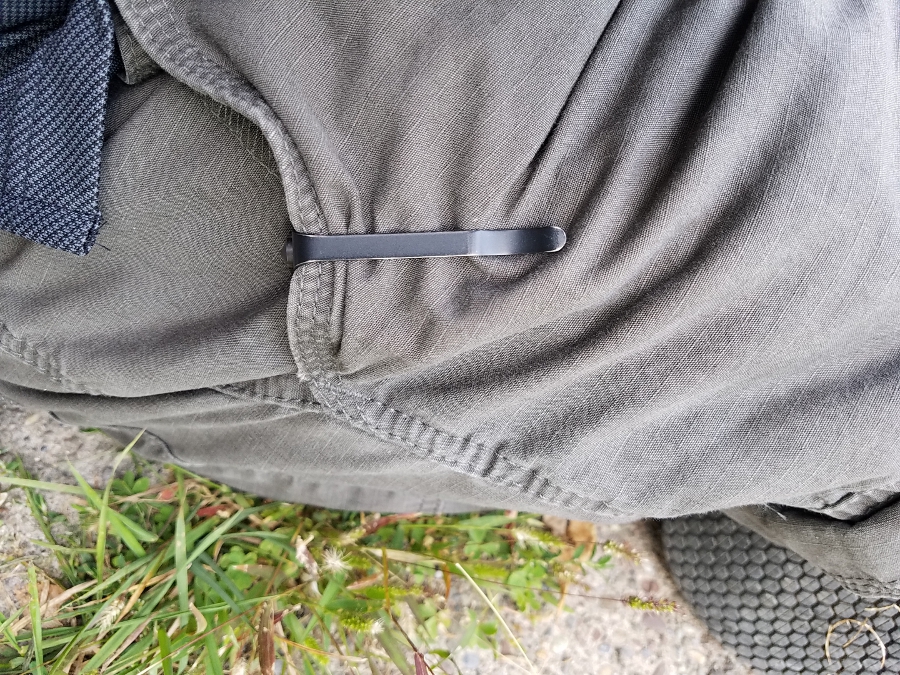
An ergonomic handle of substantial size. I have large hands and find the RBB extremely comfortable in my fat mitts. There is enough handle that I never feel like the knife is too small to grip. This allows you to lock in on the knife in an icepick grip should you have to use it in an altercation. There is plentiful texturing, which means the knife feels secure against your palm. There is an integral guard. The butt end of the knife has a protrusion that affords leverage for drawing the knife from the pocket.
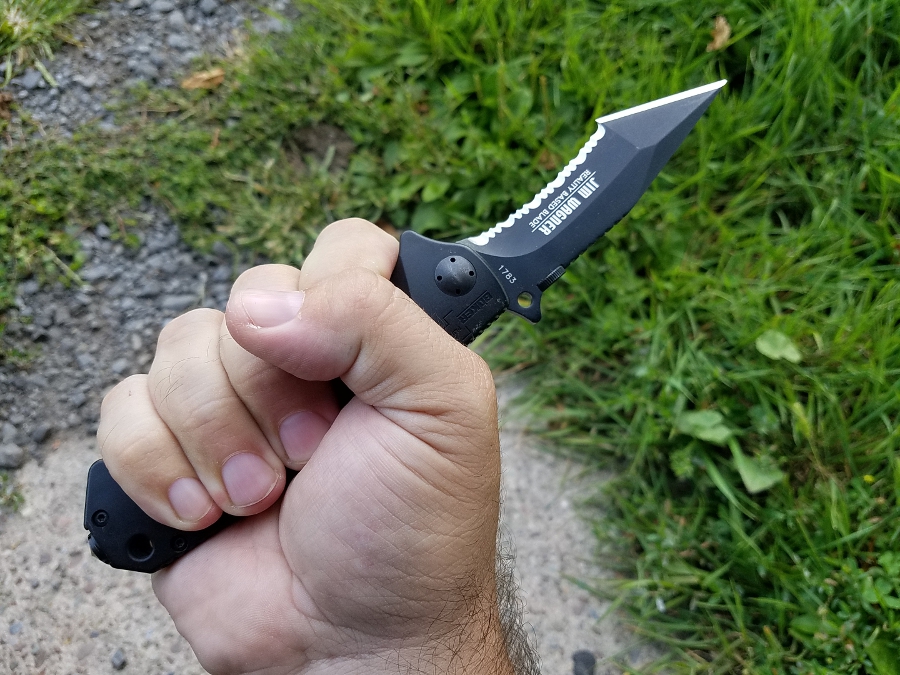
A great profile for punyo strikes. The glass-breaker tip could be used for breaking glass, certainly, but it also makes butt-end strikes with the knife (open or closed) very powerful. I’m not a fan of using a closed knife as an impact weapon; I think if you had to draw the knife to use it closed, you’re justified in using the blade. Still, the closest weapon to your target might be the butt end of the knife, making a punyo strike an option.
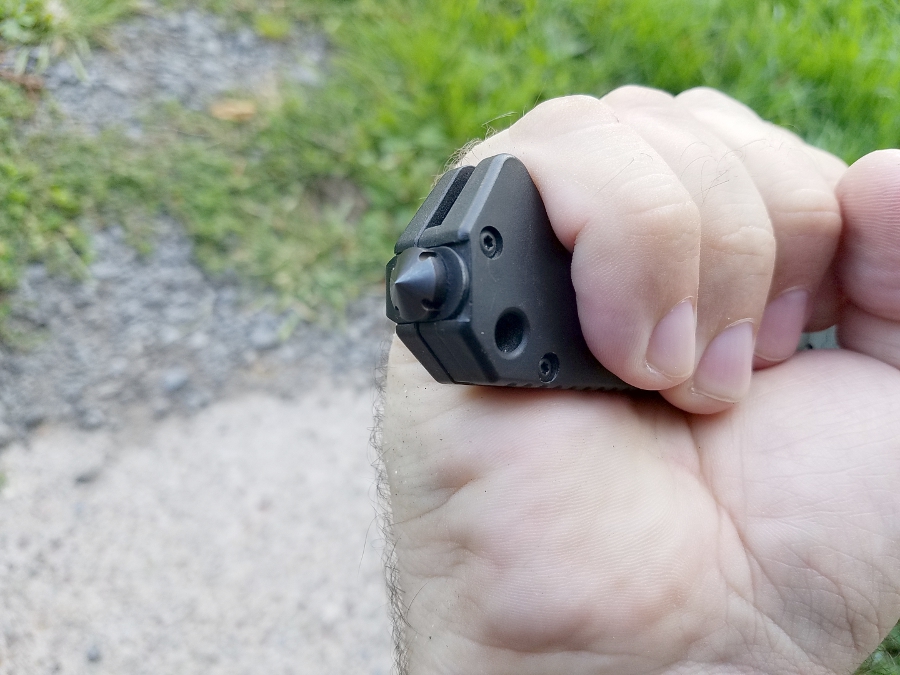
Decent fit and finish at a reasonable price. I am reluctant to carry expensive knives that might get lost or confiscated at an unexpected security checkpoint. The RBB can be had at a reasonable cost and, at least as of this writing, it can also be replaced quite readily. Fit and finish are good, so you’re not carrying junk.
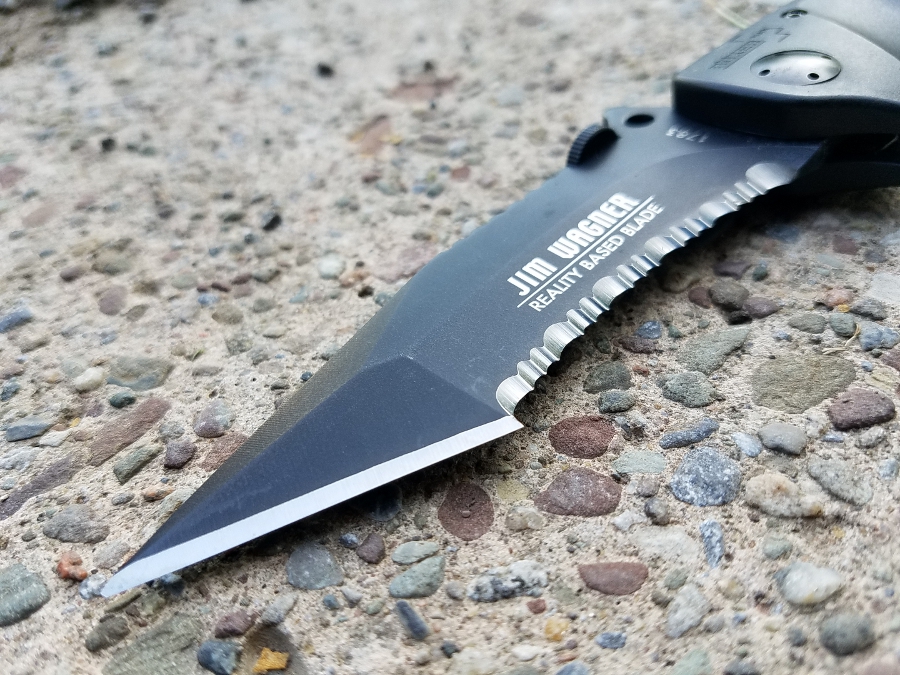
This is not to say the knife does not have negatives. As already stated, it is horrifically ugly. Some knives just look aesthetically pleasing, even elegant, to the eye; the RBB is not one of them. The triangular blade of the “tanto” version is a “gladius tip,” according to the product literature. The “tear point” at the trailing end of the primary edge is useful enough for scoring, but the recurved “kriss curve” section of serrations can be challenging to resharpen. While they do nothing for you positively or negatively, the blade boasts not one, but two useless “blood grooves.” (On a knife this size, there’s little chance a “blood groove” would need to come into play.)
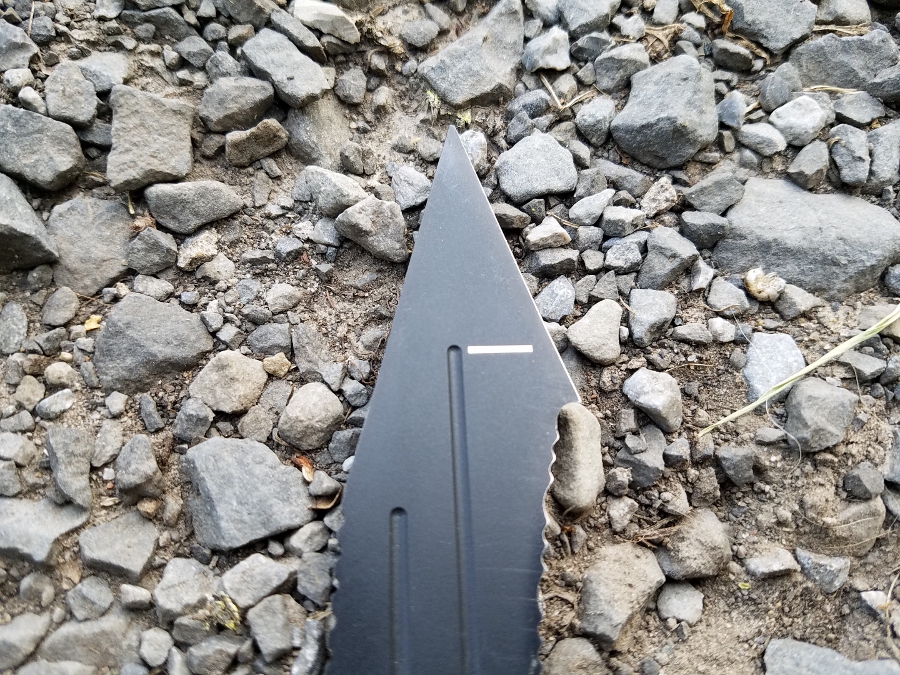
Then there’s that depth gauge — that stupid, stupid depth gauge. Wagner’s website describes it thusly:
On the same side of the blade where the blood grooves appear one can’t help but notice a silver line that is 3 centimeters rear of the tip. This 3 cm mark is what I call “a conversation piece.” As mentioned before a puncture wounds 3 centimeters, or 1 ¼ inch, or deeper can induce a phenomena known as instantaneous shock. It doesn’t mean that the victim is instantly going to pass out, but there is a strong possibility that shock can come about instantly or even minutes later, even if it is only passing out for a few seconds. The mark is merely for the owner to understand this phenomenon and to visualize the length of 3 centimeters. It is obviously not a visual marker to be looked at while engaged in conflict. The goal in any real conflict would be to shove the blade in as deep as it goes if a penetration is required. The 3 cm mark is for educational purposes only.
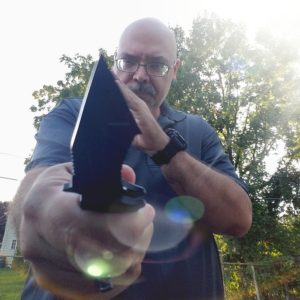 It’s absurd pseudoscience and lurid “tactical” marketing like this that has colored market perceptions of this knife to its detriment. Still, ignoring that nonsense, and ignoring the silliness of even having such a marker on the blade, it doesn’t detract from the knife’s overall utility. It’s like having a pair of Punisher Skull grips on your 1911; they don’t affect the weapon physically, but they’re a silly affectation that makes some people shake their heads or face their palms. (I say this as someone who has HAD Punisher Skull grips on his 1911.)
It’s absurd pseudoscience and lurid “tactical” marketing like this that has colored market perceptions of this knife to its detriment. Still, ignoring that nonsense, and ignoring the silliness of even having such a marker on the blade, it doesn’t detract from the knife’s overall utility. It’s like having a pair of Punisher Skull grips on your 1911; they don’t affect the weapon physically, but they’re a silly affectation that makes some people shake their heads or face their palms. (I say this as someone who has HAD Punisher Skull grips on his 1911.)
All that said, in the balance, the Wagner Reality Based Blade has much to recommend it. You could do worse in a “tactical folder” and, while carrying the RBB won’t earn you any tactical street cred, it’s not a bad choice. I will continue to defend the RBB for as long as Boker manufactures it. The knife may not get much respect, but it’s a great example of features a good tactical blade ought to incorporate. For this reason, it is worthy of consideration.
Love this design by Jim Wagner
Walt Wagner
Powell Butte,Or.